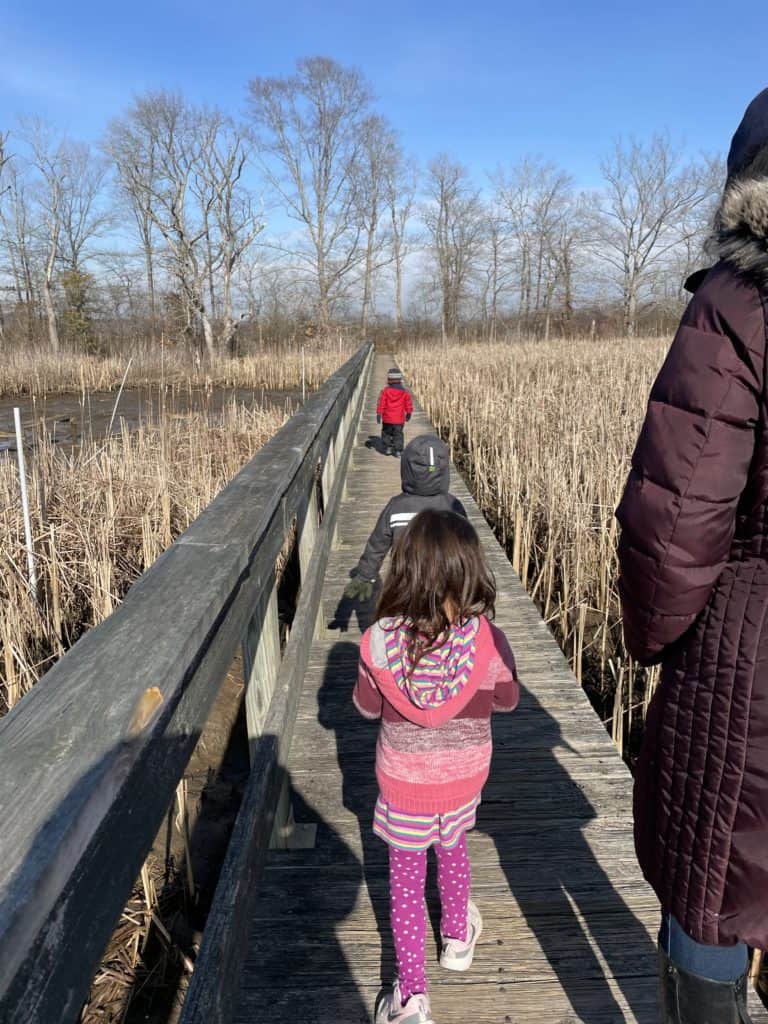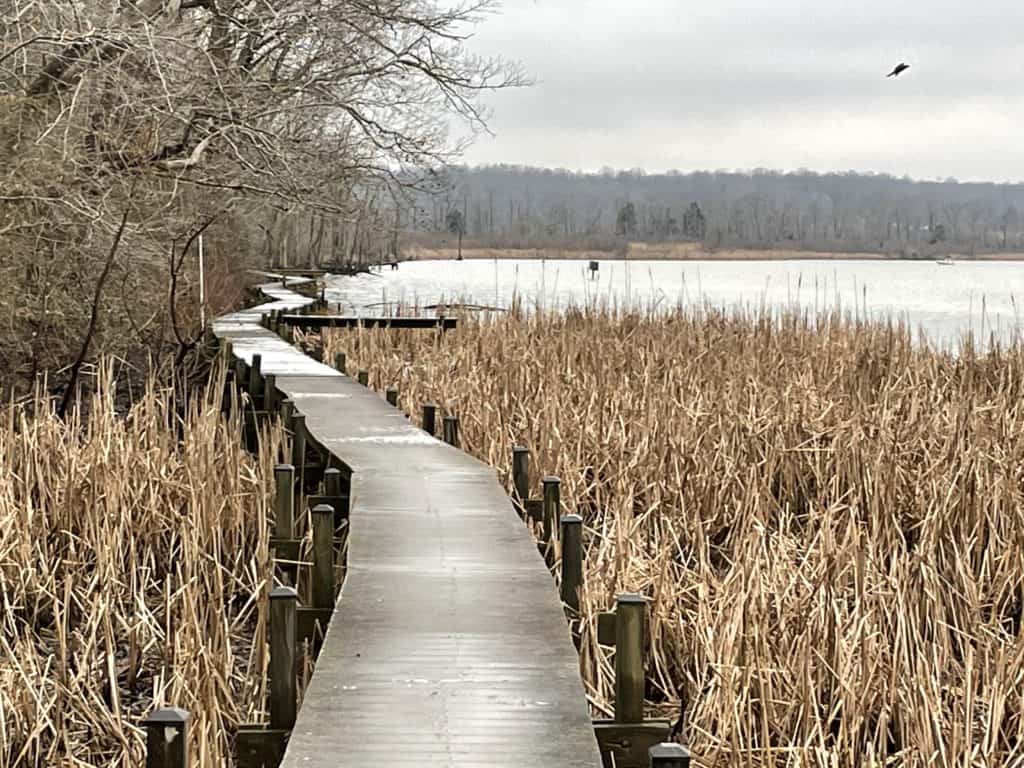A Field Trip to Jug Bay
By Jillian Amodio
Over the last year, the pandemic has led us to appreciate the lessons and healing value of the natural world. For Jug Bay Wetlands Sanctuary in Lothian, the lessons continue even when school buildings are closed.
Jug Bay has long been an integral part of local education. Countless school children have waded through its marshes, hiked through its woods, and explored the natural habitats of this tidal area along the Patuxent River. It is one of the state’s hidden gems when it comes to education and research, protecting about 1,700 acres of freshwater wetlands, tidal marshes, forest, meadows, and fields, which together form a robust ecosystem and home to a variety of native plants, mammals, reptiles, fish, birds, amphibians, and even beneficial microbes that are essential to the health and sustainability of our local ecological community.
Last spring Jug Bay was planning to host nearly 1,500 children in their spring field trip season, but when COVID hit and schools closed down, the staff had to quickly change their plans. With outside-the-box thinking, coordinating safety policies, and creating virtual opportunities, Jug Bay was able to continue their mission of education and exploration in ways that cater to the needs and comfort levels of the community.
Instead of large groups of children on a school-sponsored field trip, Jug Bay now offers small in–person “pod” experiences. Originally intended for homeschool pods, the park stresses that these field trips are for anyone who wants an outdoor environmental experience. The field trips have been shortened from four hours to two, limiting the need for shared meal times or numerous bathroom breaks.
The trips are led by Sarah Kempfer, Jug Bay Education Coordinator and Naturalist and other volunteer naturalists trained to offer deeper insight and understanding to the intricacies of the natural world. She hopes others will join the cause of volunteer naturalists, encouraging children to explore the natural world.
Local mother Stephanie Cornett says she recently took eight homeschool children on an in-person field trip in October. “One of the best field trips I’ve been on,” she says. “The guide was beyond patient and kind. The content was fun and the hands-on activities kept them engaged.”
Although the visitor center remains closed to the public at this time there are audio guided tours that include a downloadable document that uses text, images, and an audio playlist to help ensure visitors get the most out of their time at Jug Bay.
Families can also check out an explorers’ bag to enhance a self-guided tour. The bag includes binoculars, a bird identification book, information about the marsh boardwalk, a scavenger hunt, and a leaf identification game.
For those who may not be ready for in-person visits, Jug Bay offers multiple ways to experience the sanctuary from the comfort of your home. Kempfer states that “some of the schools that would usually bring children in person to Jug Bay have been doing our field trips virtually. We bring them along on a live virtual tour where we may use nets to search for tadpoles and salamander larvae or take them on a journey along the marsh boardwalk. The kids have an opportunity to ask questions live and have myself or a naturalist volunteer answer in real time.”
Courtney Gibson and a friend recently had their children take a virtual field trip and found it to be an incredibly insightful experience. “We had a great time. So much to explore and great for the younger and older kids.”
There are also several pre-recorded virtual tours on the park’s website as well. Kempfer said after a recent live virtual field trip one young boy was so inspired that he couldn’t wait to go outside on his own and enjoy further time exploring nature on his bike.
Regardless of how children, families, or individuals choose to explore Jug Bay, Kempfer wants people to consider their environments. “We want to give people a chance to be immersed in nature and spend time being in the elements, building connections with nature and encouraging a love of nature and environmental stewardship. Kids are spending a lot of time indoors and online and we want to help them reconnect with the natural world.”




